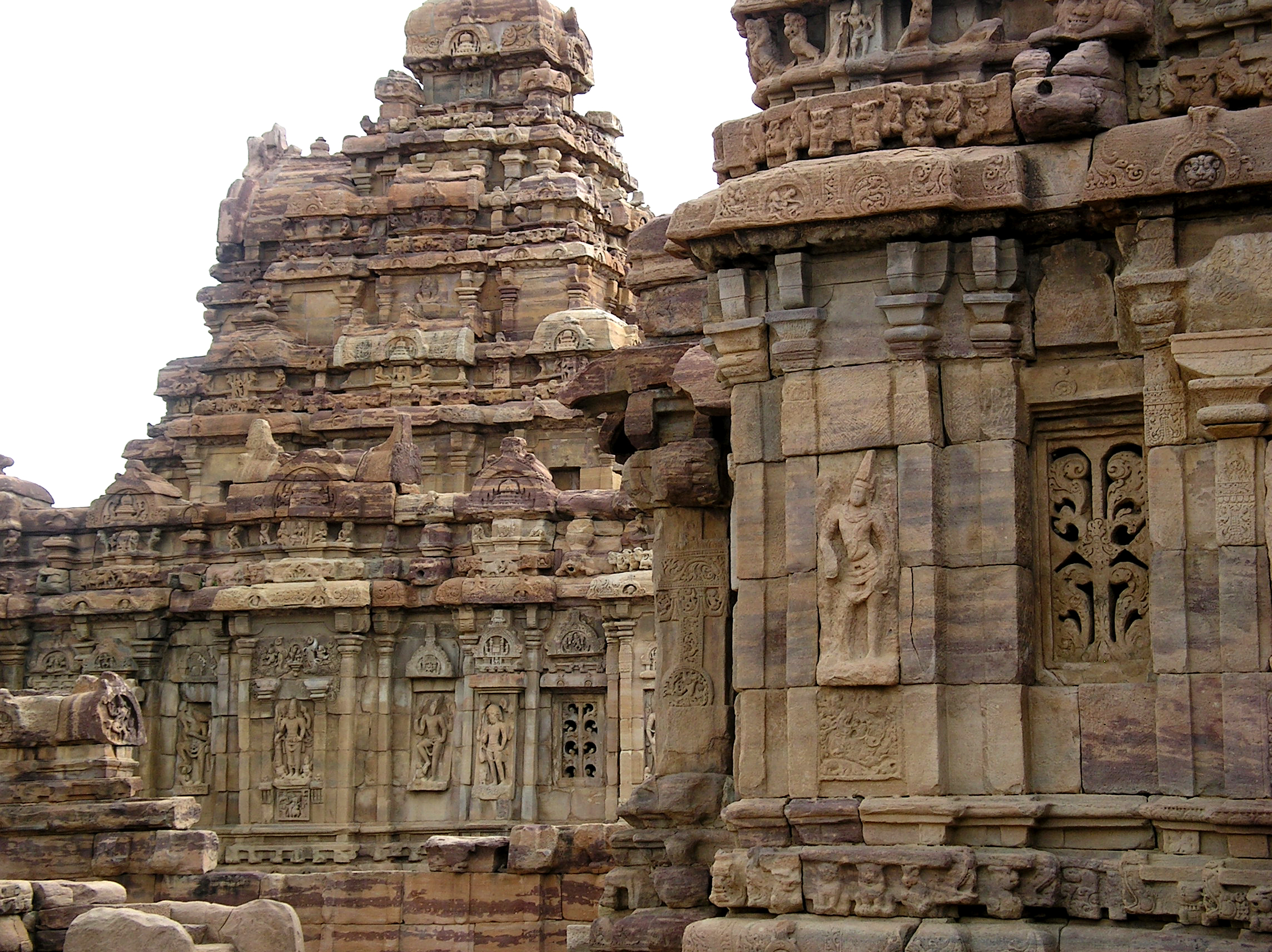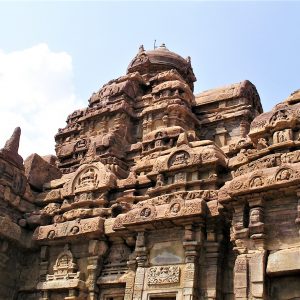Chalukya Temple at Pattadakal, Karnataka, India
Typical Chalukya Temple constructed in 6th CE, Karnataka, India at the UNESCO World Heritage Centre of Badami-Pattadakal-Aihole.
Hampi or Hampe refers to the Group of Monuments is a UNESCO World Heritage Site located in east-central Karnataka , India. It was an important pilgrimage centre of the Hindu religion. Hampi bears the indelible stamp of history of several Hindu dynasties and empires that each left their distinctive stamp and style of architecture on the place.
The Hampi state was a prosperous, wealthy and grand city near the Tungabadra with numerous temples, farms and trading markets.
Originally it was part of the southern part of Emperor Asoka’s Mauryan empire in the 3rd BCE. Later the Chalukya Dynasty of Hindu rulers added to the architectural wealth of Hampi and made it a centre of religious and educational activities during 11th-13th CE. Following Chalukya rule, further additions were made to Hampi by Hoysala Hindu kings between 12th and 14th CE. After the end of the Hoysala line, a short lived Hindu kingdom called the Kampili came to power but ended after an invasion by the Muslim army of Muhammad Bin Tughlaq. The Hindu women of Kampili committed jauhar (ritual mass suicide) when the Kampili soldiers faced defeat by Tughlaq’s army.
n 1336 CE, the Hindu Vijayanagar empire arose from the ruins of the Kampili kingdom. It grew into one of the famed Hindu empires of South India that ruled for over 200 years. By 1500 CE, Hampi-Vijayanagara was the world’s second-largest medieval-era city after Beijing, and probably India’s richest at that time, attracting traders from Persia and Portugal.
In 1565 the coalition armies of Muslim Sultanates defeated the king of Vijayanagar, then looted , pillaged and burnt Hampi. The fires kept burning for 6 months after the battle was over and the carbon ashes still seen at Various sites bearing silent witness to the destruction of these great architectural marvels. Hampi was abandoned and left as ruins till being rediscovered by a British Surveyor General,. Excavations and research followed which are still being continued at the site by the Archaeological Survey of India.
Prints : Available as Giclee print on finest quality paper or canvas. International shipment
Sizes available: 8 x 12″(203 x 305 mm); 12 x 16″(305 x 410mm); 18 x 24″(457 x 610 mm); 24 x 32″ (610 x 813mm)
For list of prices, details of paper or canvas and pigments used, please get in touch via contact form



